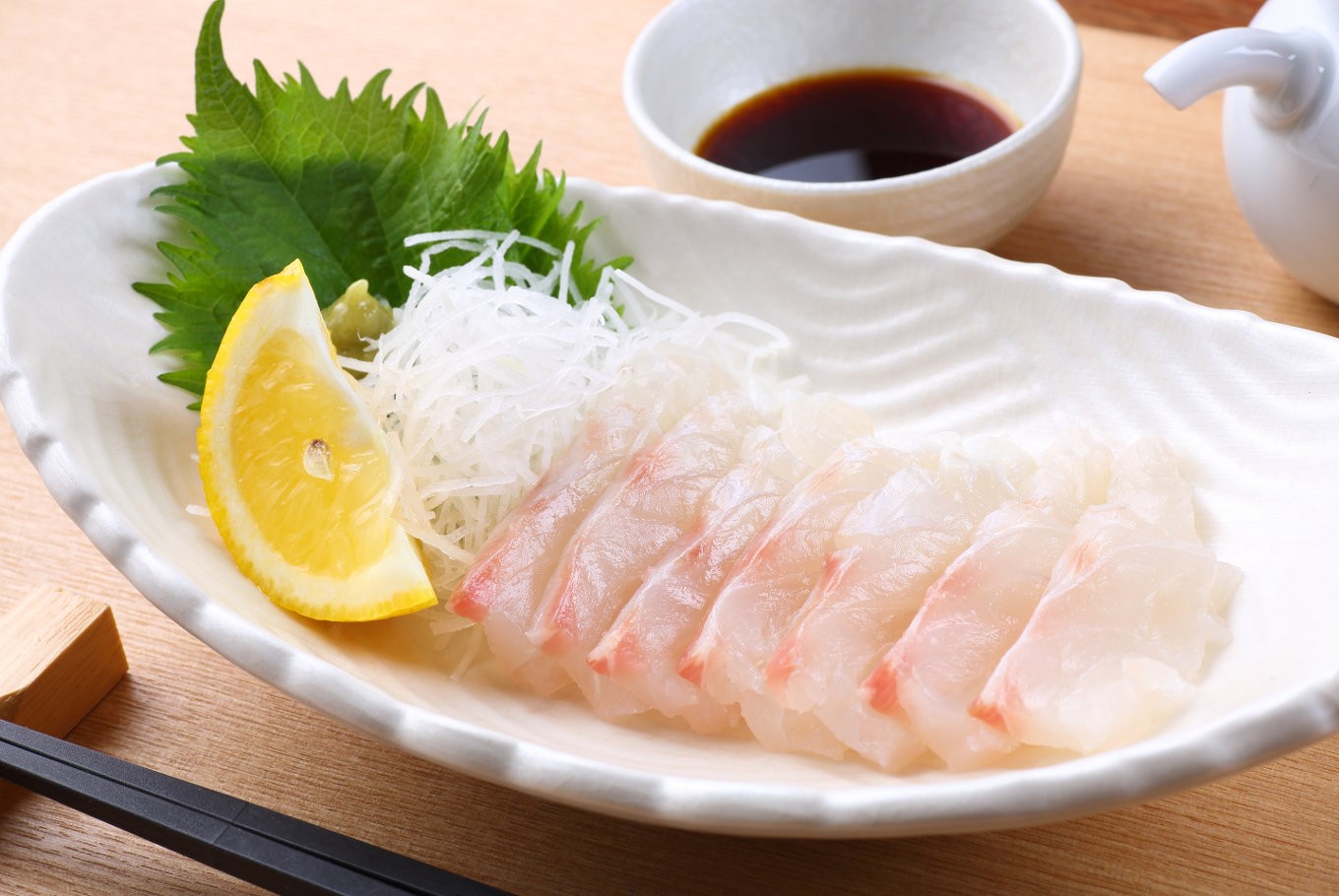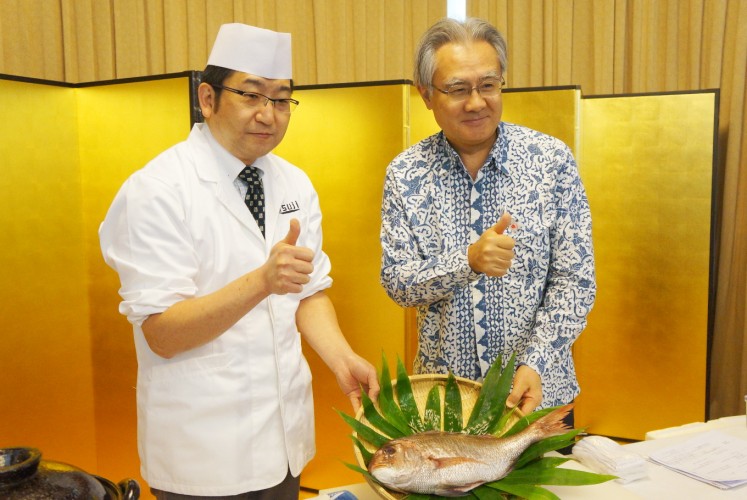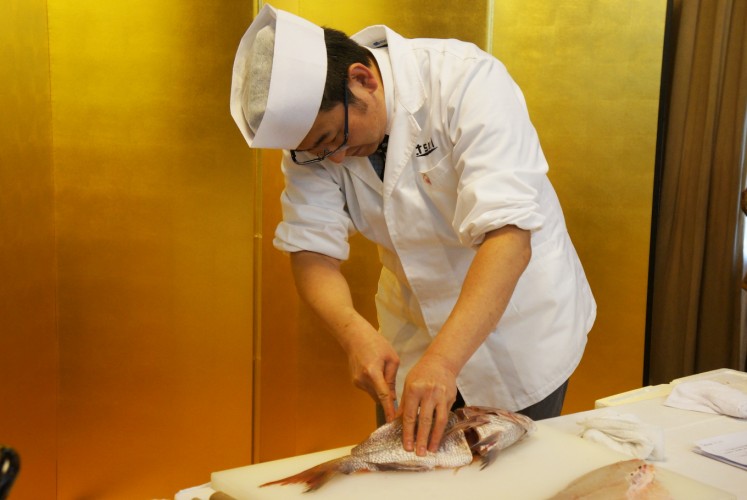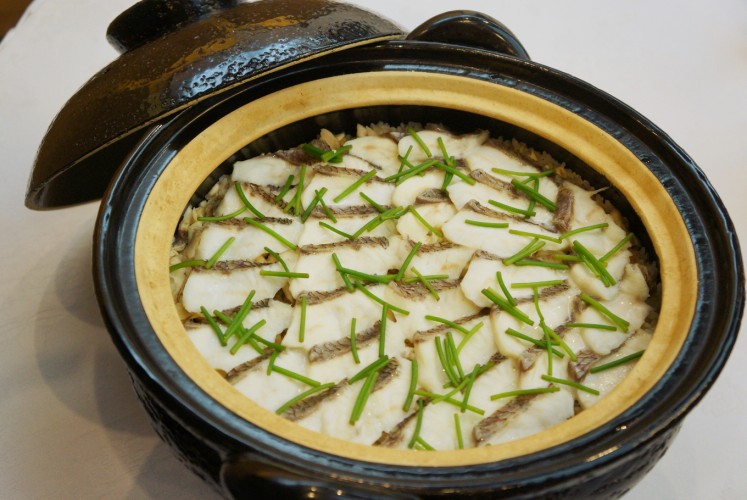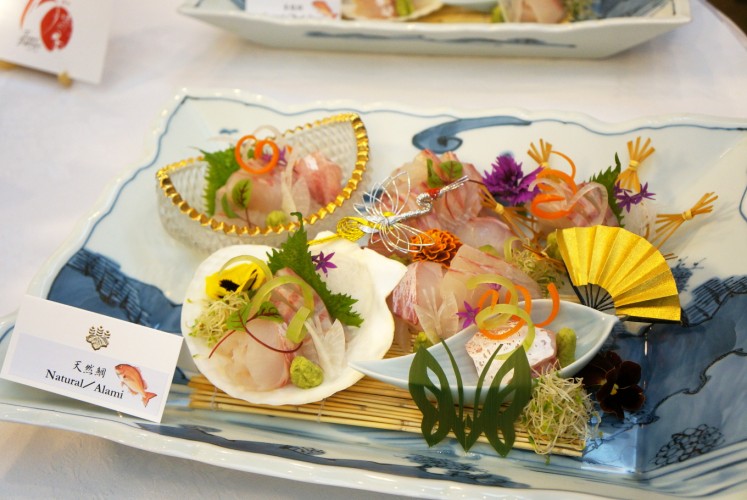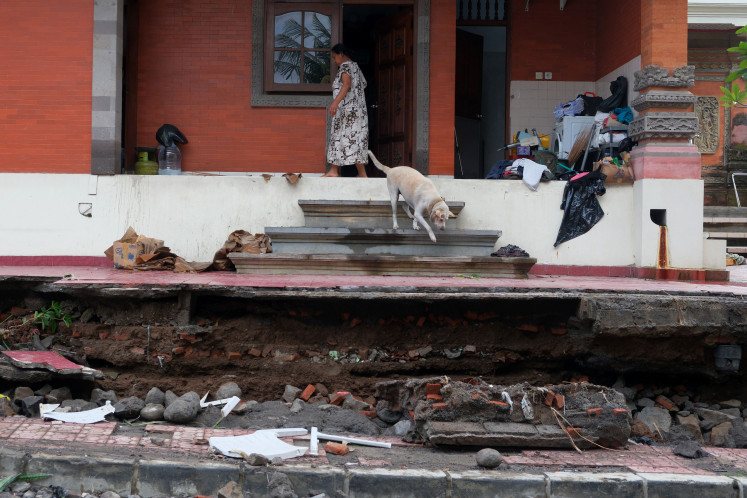Popular Reads
Top Results
Can't find what you're looking for?
View all search resultsPopular Reads
Top Results
Can't find what you're looking for?
View all search resultsJapanese culinary event 'celebrates' red sea bream
Red sea bream, called tai in Japanese, is a species of fish that can be found in the waters of Japan, except around Hokkaido and Okinawa.
Change text size
Gift Premium Articles
to Anyone
R
ed sea bream, called tai in Japanese, is a species of fish that can be found in the waters of Japan, except around Hokkaido and Okinawa. It resembles a red snapper at a glance, but the red sea bream actually has a rounder body.
During the second iteration of the "Japanese Culinary Introduction", recently held at the official residence of Japanese Ambassador to Indonesia Masafumi Ishii, The Jakarta Post learned several interesting things about this particular fish.
Best seasons for 'tai'
The best time during the year to harvest the red sea bream is during the spring and fall. The fish caught during the spring are called sakuradai (cherry blossom tai), while those caught in the fall are called momijidai (maple tree tai), after the iconic flora of each season.
Japanese Ambassador to Indonesia Masafumi Ishii (right) and Chef Hori pose with a platter of red sea bream on Feb. 23, during the second edition of the Japanese Culinary Introduction. The event was held at the ambassador's official residence in South Jakarta. (JP/Ni Nyoman Wira)“During the spring, they’re in the stage of laying their eggs, so they contain much nutrition,” said Chef Hori Ikuo, the resident chef at the ambassador's residence. “And in the summer, they will lack stamina, hence it will be better to harvest them in the fall, when they’re regaining their energy.”
Red sea bream is usually served during celebratory events, because its name is a homophone for the Japanese term meaning “happiness”, and its body is red and white like the Japanese flag.
Choosing fresh fish
During the event, Chef Hori also shared some of his techniques, or meikiki, for choosing the freshest fish.
Chef Hori presents slices of red sea bream. The fish is usually served on celebratory occasions, and is prized for its delicate flavor. (JP/Ni Nyoman Wira)First, make sure that the eyes are clear and bright, not milky or dull. Second, touch its belly gently to check that it is still springy and that it does not "dent" at the touch, taking care not to poke the fish. Third, check that its gills are bright red.
“Although you might have good skills in cooking [fish], if you don’t have good meikiki, the result won’t be good,” Chef Hori said.
Preparing the fish
Chef Hori demonstrates the best way to prepare red sea bream fish in order to preserve its freshness and flavor. (JP/Ni Nyoman Wira)Japanese chefs have a technique called ikejime to prepare the fish so as to preserve its fine quality. It involves cutting the fish’s blood vessel and draining it to retain its freshness and flavor.
Another technique called nojime refers to freezing the fish. This is usually done when there is a large amount of fish so it is impossible to apply ikejime to each one. “Although the result isn’t as fresh as if we cut the fish using ikejime, the effect will be the same,” said Chef Hori.
Read also: What to know when cooking Japanese food at home
Cooking red sea bream
Chef Hori prepared two dishes featuring tai during the event: tai-meshi (literally, "red sea bream rice") and sugata-zukuri (red sea bream sashimi).
A clay pot is used to cook and serve 'tai-meshi', which is made from red sea bream and rice cooked in fish stock. (JP/Ni Nyoman Wira)Tai-meshi is prepared by cooking the fish in a clay pot with rice that has been pre-cooked in fish stock. The dish is garnished with slices of fresh red sea bream on top. Meanwhile, sugata-zukuri is garnished wth julienned daikon radish, oba leaves and wasabi. The dish can also be lavishly decorated with different ingredients, such as radishes, carrots and bamboo leaves shaped into a butterfly or a Japanese whooping crane.
Use every part
All parts of the red sea bream are used in cooking tai-meshi. The bones from its head and tail are made into fish stock. In sugata-zukuri, its head can be used as a garnish and its body as a platter.
A platter features an elaborately garnished 'sugata-zukuri' (red sea bream sashimi), using radishes, bamboo leaves and carrots, as well as the fish's head and body. (JP/Ni Nyoman Wira)Serving the fish
In Japan, fish is served with its head facing to the left of the diner, its tail to the right and its belly facing "down", or toward the diner. The positioning allows diners to eat the fish more easily, wielding a pair of chopsticks in their right hand and holding the fish’s head with their left hand.
Wild vs. farmed fish
Red sea bream are either wild or farmed. The farmed fish has thicker swathe of red along its middle and is darker along its spine compared to the wild variety. “The farmed fish usually has more fat and its body is rounder,” Chef Hori said. “The price for wild fish is four to five times higher compared to the farmed one.”
A colorful platter presents sashimi of wild red sea bream. Another platter (not pictured) served farmed red sea bream for comparison. (JP/Ni Nyoman Wira)The Post had the chance to sample the two different varieties of red sea bream and found that the farmed fish had a softer texture compared to the wild fish. (kes)

